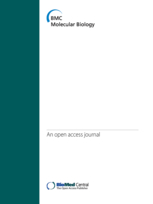
ARTHROPLASTY
Higher flexion devices in TKA have no effect on patient-perceived outcomes
This report has been verified
by one or more authors of the
original publication.
BMC Musculoskelet Disord. 2013 Apr 8;14(1):127. doi: 10.1186/1471-2474-14-127
36 patients undergoing a one-stage bilateral total knee arthroplasty were randomized to receive standard cruciate-retaining (CR) TKA in one knee and high-flex posterior-stabilized (PS) TKA in the other. This trial was designed to investigate whether higher flexion had an effect on patient perceived outcomes. 1 year results through Visual Analogue Scale and Short Form-36 survey indicated no differences in ability to perform daily activities, satisfaction, “feel” of the knee, or pain in either prosthesis.
Unlock the full ACE Report
You have access to {0} free articles per month.Click below to unlock and view this {1}
Unlock NowCritical appraisals of the latest, high-impact randomized controlled trials and systematic reviews in orthopaedics
Access to OrthoEvidence podcast content, including collaborations with the Journal of Bone and Joint Surgery, interviews with internationally recognized surgeons, and roundtable discussions on orthopaedic news and topics
Subscription to The Pulse, a twice-weekly evidence-based newsletter designed to help you make better clinical decisions
Exclusive access to original content articles, including in-house systematic reviews, and articles on health research methods and hot orthopaedic topics
Or upgrade today and gain access to all OrthoEvidence content for just $1.99 per week.
Already have an account? Log in


Subscribe to "The Pulse"
Evidence-Based Orthopaedics direct to your inbox.
{0} of {1} free articles
Become an OrthoEvidence Premium Member. Expand your perspective with high-quality evidence.
Upgrade Now













































































